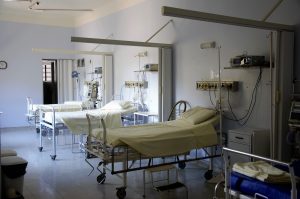
Coronavirus has laid bare a myriad of fault lines around inequality and health disparities in the United States, racial but also evoking other historical examples such as HIV/AIDS in which entire social groups were disproportionately exposed and mistreated. Rightly, commentators have explained racial disparities in coronavirus deaths by elaborating the multiple, compounding types of risk that matter—ranging from the most individual level, such as pre-existing health conditions, to far-reaching social, economic, occupational, and neighborhood conditions that increase risk of exposure, to the deep historical and policy roots of racism and discrimination in our country. Coronavirus provides a compelling lens through which problems that are often easily overlooked come to the fore in unmistakable, crushing ways.
At the same time, and in a separate track of discussion, there is widespread cultural angst around the types of deaths that people are experiencing in the current environment. Anecdotal evidence abounds of situations wherein families are upended, traumatized, and forced to reorganize their lives after the death of a loved one. Symptomatic family members are quarantined, sometimes at home, sometimes in institutions such as nursing homes. If hospitalized, they are not allowed to have visitors, and many die on ventilators without family at their sides. At best, there is the hope that an overworked, overexposed healthcare worker will be able to take the time to facilitate a Facetime goodbye. In response, clinicians try to create “compassionate” workarounds and urge us to engage in end-of-life planning with our families, fill out advanced directives, and have the uncomfortable conversations. To some, it would appear that one of the saddest aspects of the pandemic is the “unbearable loneliness,” the ways it robs people of the opportunity to have the kinds of deaths they would have chosen, surrounded by those who are close to them.
Although this new end-of-life landscape is challenging and terrible, it provides an important opportunity to better understand inequality.
In so-called ‘normal’ times, racial and socioeconomic disparities do not stop at the door of health care. As a result, patterns in end-of-life care unfold in socially patterned ways, with less advantaged Americans at increased risk of several kinds of adverse events at the end of life. For example, compared to people living in the least deprived neighborhoods, those living in the most deprived neighborhoods are more likely to die in the hospital (versus home), receive acute hospital care in the last three months of life, and to not receive specialist palliative care. For every quintile increase in area deprivation, odds of hospital death (versus home) and not receiving palliative care increase. At the individual level, years of education are similarly associated with not receiving specialist care. Though heterogeneity was high, analyses indicate a strong positive association between years of education and odds of home (versus hospital) death. This means that even before coronavirus, less advantaged Americans were already at increased risk of several kinds of adverse events associated with end-of-life—even after coming in contact with healthcare system.
A common denominator for such adverse events is control. Having control over whether you need to leave your home. Control over how exposed you are to other people who may be infected. Control over whether you can cover your bills, even if you are furloughed or laid off. Control over whether you have back-up plans for childcare, or alternative options for food shopping, or ways to mobilize care for loved ones who may be vulnerable outside your household.
People with more resources are better positioned to adjust on the fly, to make home isolation workable, even if it is not their preference. More resources translate to more control over how to protect your health but also your home, routines, safety, and emotional well-being. People with fewer resources are more likely to be exposed at every turn, literally and figuratively. In each of the ways that richer people can mobilize resources to self-protect and adjust, poorer people are vulnerable in part because they have fewer resources and therefore fewer choices.
In this context, coronavirus is clearly not the “great equalizer.” In many ways, it deepens existing fractures and separates us (literally and figuratively). The pandemic heightens disparities in our ability to avoid the virus. Depending on one’s underlying health status, it potentially heightens disparities in how sick someone becomes once they contract the virus or how well they can try to manage it once they become sick.
The one place where the virus potentially reduces disparities—a prospect that only time and data will confirm for sure—is at death’s door. When we are all governed by quarantine rules of separation, even the best laid end-of-life documentation will likely not facilitate the socially connected death people would often choose. It is at this last link in a long chain of inequalities where socioeconomic gradients may flatten precisely because we have limited knowledge about how to save people. People whose socioeconomic resources normally help them gain traction for maximizing their health are now in a position, just like disadvantaged groups are normally, where they cannot do that. We are all in the same brutal situation, even if it is just for this one fleeting, bounded microcosm in a broad social picture.
The experience of death and dying has been dramatically altered by coronavirus – hospitals are banning visitation and palliative care has not been regarded as an essential health service. With its continued rapid development, it is not possible to fully comprehend the impact that coronavirus will ultimately have on inequalities related to death, dying, and end-of-life care. However, if we are troubled by our loved ones being alone at end-of-life and not being able to do anything about it, we should consider what that tells us about more general experiences of living in systems that do not support our health or our preferences. In this way, the pandemic offers us a novel and crucial glimpse into health disparities, a humbling opportunity for the “they” to also be the “we.”
